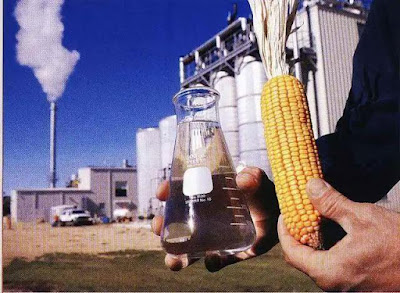On March 17, Dalian Institute of Chemical Physics, Chinese Academy of Sciences and Shaanxi Yanchang Group announced in Beijing that the world's first coal-based ethanol industrialization project with my country's independent intellectual property rights - Shaanxi Yanchang's 100,000-ton/year synthesis gas-to-ethanol industrial demonstration project has opened up the entire process , to produce qualified anhydrous ethanol, the device has been running smoothly for two months. This is another major breakthrough in the application of my country's new coal chemical industrialization technology, which is of great significance to ensuring my country's energy security, food security, clean utilization of coal and alleviating air pollution.
Ethanol (alcohol) is a premium clean fuel
Ethanol is alcohol. It can be blended with liquor and medical disinfection. In industry, it can be used not only as a solvent for varnishes, cosmetics, inks, and paint removers, but also as a raw material for the manufacture of pesticides, rubber, plastics, rayon, and detergents. In fact, the biggest use of ethanol is as a gasoline additive, and 66% of the world's ethanol is added to gasoline as fuel ethanol. Academician Liu Zhongmin, deputy director of the Dahua Institute of the Chinese Academy of Sciences, said that gasoline added with ethanol increases the oxygen content, and the gasoline burns more fully. Significant reduction, comprehensive emissions reduced by more than 1/3.
Ethanol can be produced from grain. However, in order to prevent threats to food security, my country's grain-based fuel ethanol has not been developed. In 2006, the state withdrew the right to approve the fuel ethanol project.
"At present, the main method of ethanol production in the world is still fermentation." Liu Zhongmin said that the United States uses corn as raw material to produce 44.24 million tons of fuel ethanol annually, Brazil uses sucrose as raw material to produce 21.28 million tons of fuel ethanol annually, and my country mainly uses aged grains as raw materials. The annual output of fuel ethanol is only 2.5 million tons. Based on the national conditions, the production of non-grain fuel ethanol is our inevitable choice, and we must give full play to the advantages of my country's coal resources.
Unique technical route
The use of fossil resources to produce ethanol has long been a worldwide pursuit. my country urgently needs to develop a complete set of coal-based fuel ethanol production technology. There is no precedent in foreign countries, and it is a worldwide challenge to directly produce ethanol from coal through synthesis gas.
After years of research, the Dahua Institute of the Chinese Academy of Sciences proposed a process route for synthesizing ethanol from coal-based synthesis gas through carbonylation of methanol, dimethyl ether, and hydrogenation. Non-precious metal catalysts can be used to directly produce anhydrous ethanol. This is a unique environmentally friendly new technology route.
In 2010, Dahua Institute started the laboratory test and pilot test, and successfully developed a molecular sieve carbonylation catalyst with high activity and high stability through a large number of innovative research and tackling key problems, and made great achievements in the research of dimethyl ether carbonylation. breakthrough. In September 2015, the National Energy Administration commissioned China Petrochemical Industry Federation to appraise the pilot test results of the project. The appraisal committee believes that: the technical indicators are advanced and applicable, and the main indicators have reached the international leading level compared with similar technologies in the world. The project was included in the National Energy Administration's "Energy Technology Revolution Innovation Action Plan (2016-2030)".
In 2014, Dalian Institute of Chemical Physics and Yanchang Petroleum launched a 100,000-ton/year syngas-to-ethanol industrial demonstration project. At the end of last year, the plant was linked for trial operation. At the beginning of this year, qualified anhydrous ethanol was produced with a purity of 99.71%.
Significant social benefits
The success of the 100,000-ton/year synthesis gas-to-ethanol demonstration project has significant social benefits. Ethanol can replace gasoline and reduce emissions. Academician Zhang Tao, vice president of the Chinese Academy of Sciences, believes that the success of this project makes it possible to promote ethanol gasoline on a large scale in my country, especially in the central and western regions where coal resources are abundant and food resources are limited. In fact, Shaanxi Yanchang Group has completed the feasibility study of a 500,000-ton industrialized plant, and Xinjiang Tianye Group is also preparing to build a million-ton coal-based ethanol plant.
Academician Liu Zhongmin said that the current operating rate of domestic methanol plants is only 58%, and this ethanol technology has certain commonalities with methanol synthesis in terms of process. Therefore, "this technology can transform a large number of existing excess methanol plants into ethanol plants, which is conducive to adjusting the industrial structure and releasing production capacity."



No comments:
Post a Comment